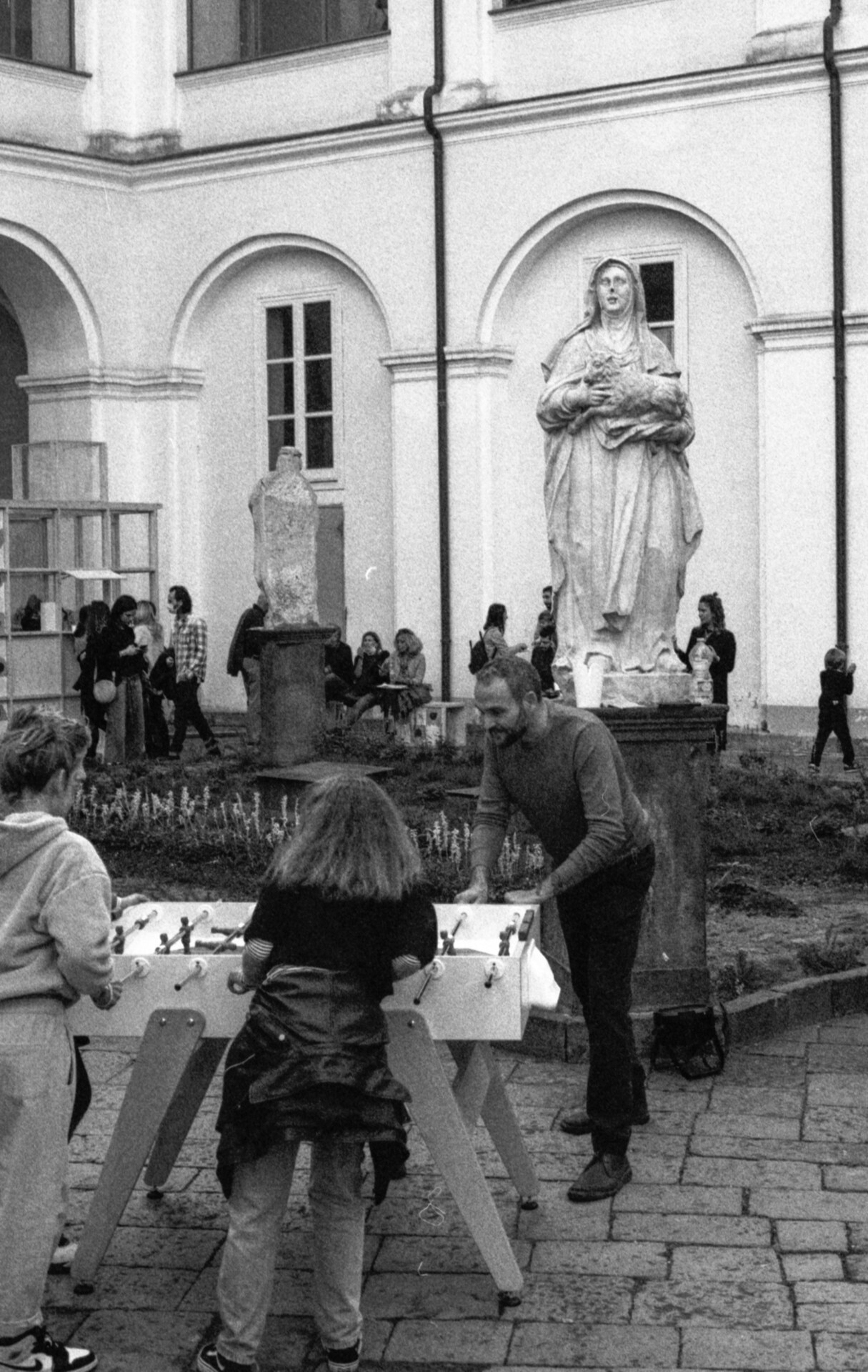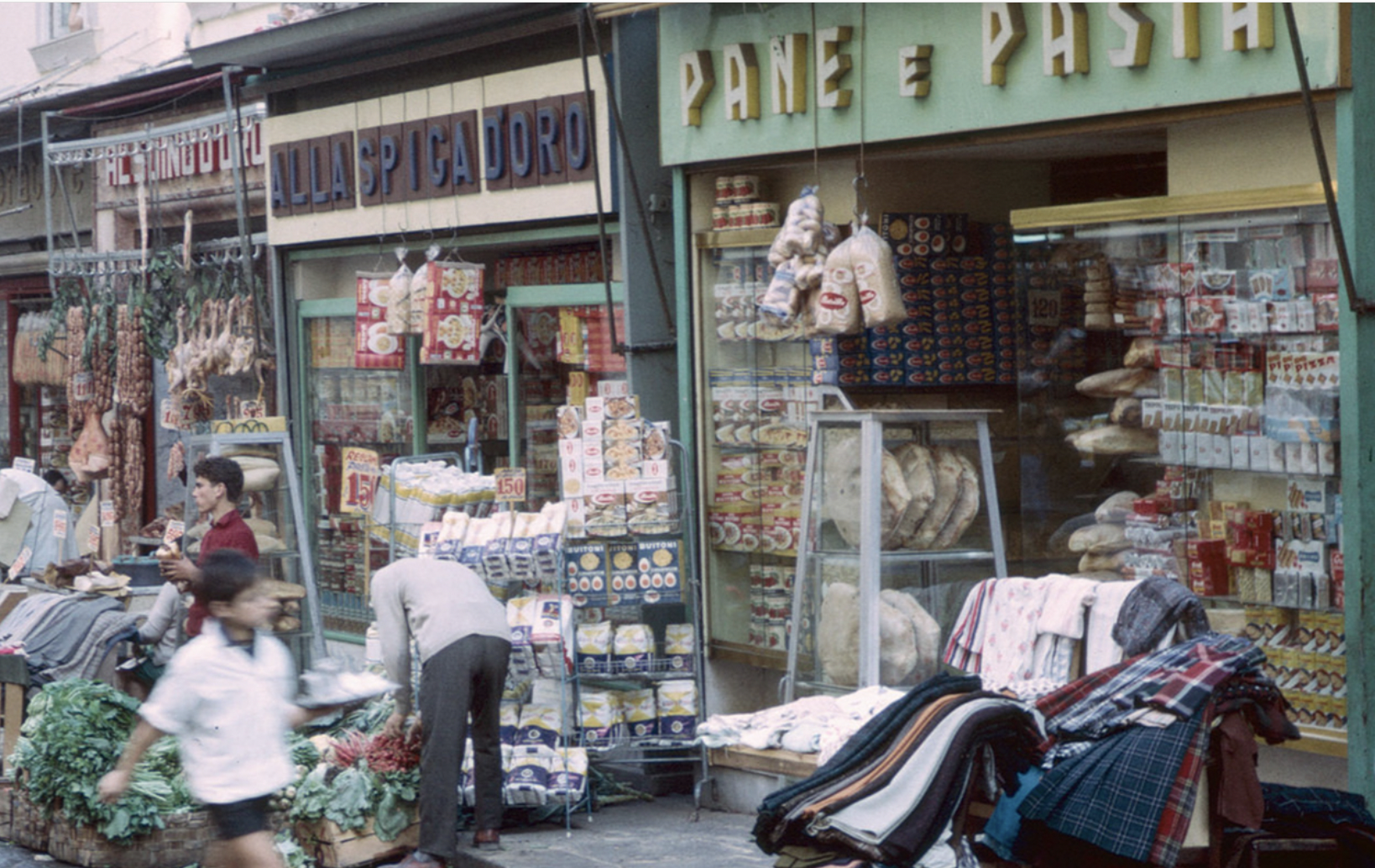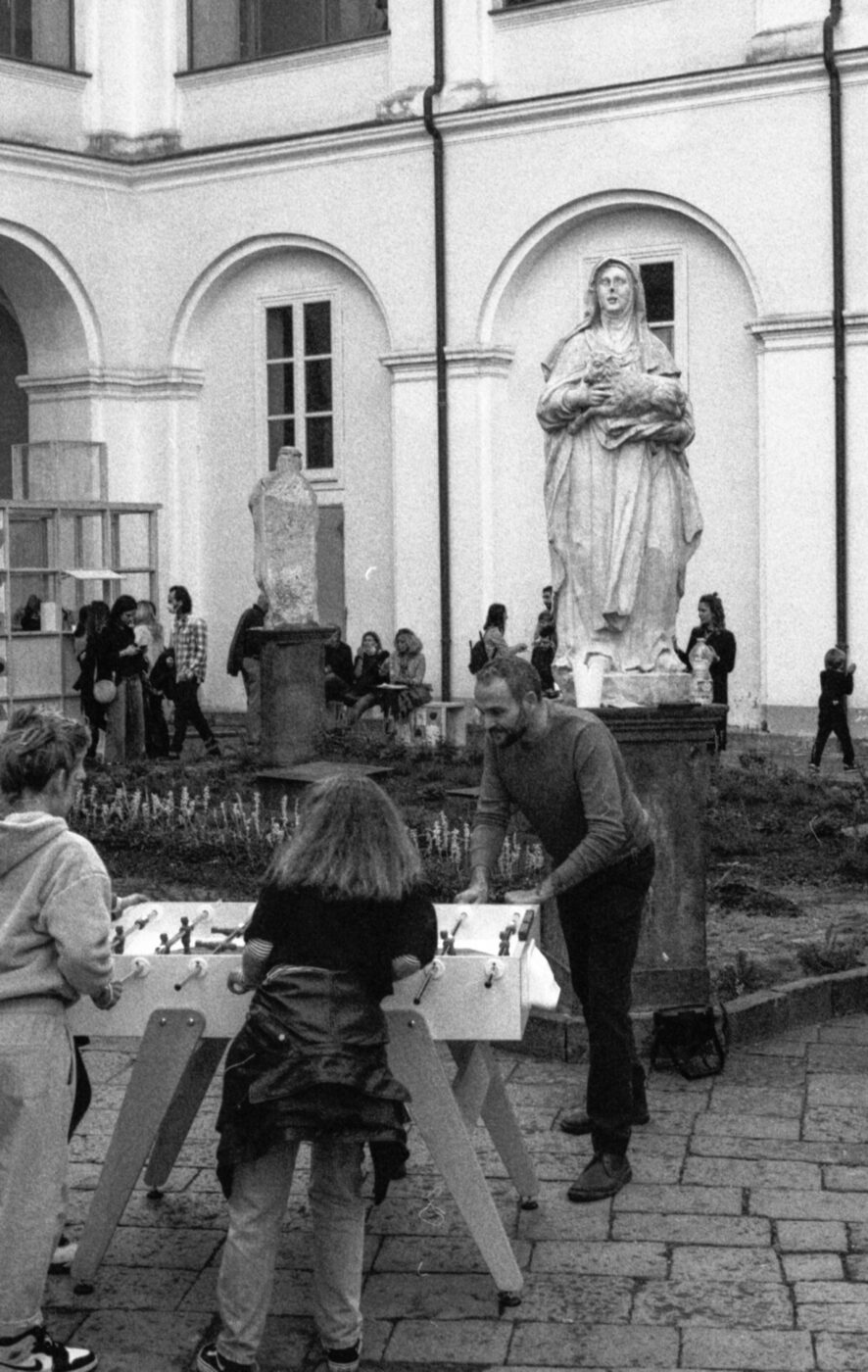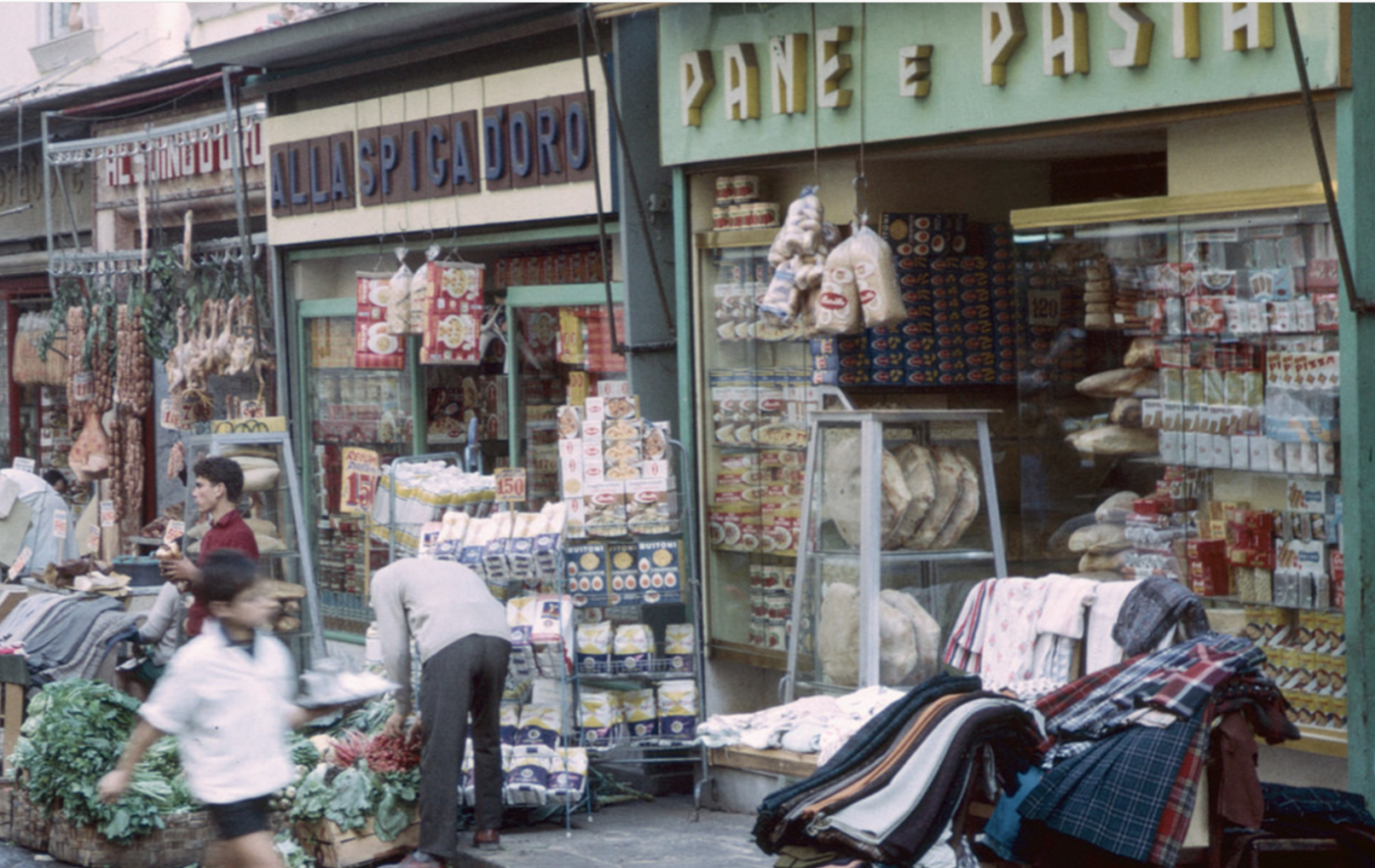Ammuina is the chaos of chattering voices turning into nonsense around you; the caravans of mopeds in the street, weaving in and around cars with friendly honks; the bickering on a corner, interspersed with dialectal curses; the older lady shouting from her balcony before throwing water on your head; kids playing soccer in the street and accidentally kicking the ball into the ortofrutta. Put as concisely as possible, ammuina is “confused joy” or “joyful confusion”, that controlled bustle ingrained in the fabric of the city and without which Naples would not be Naples. “È tutta n’ammuina,” you might hear a Neapolitan say, marveling at a particularly lively or crazy situation.
Ammuina is probably one of the first things that strikes anyone visiting the city, or at least for me it was. When I was a student with a flat in the center, the nighttime ammuina–processions of rowdy teens, handcarts playing traveling Neapolitan songs, street tenors showing off their questionable voices–became my lullaby, and when I went back home to my small, quiet village in Puglia, I couldn’t sleep because of the silence.
The etymological origin lies most recently in the Spanish “amohinar”, translated as “to make confusion”. The same root can also be found in “ammutinare” (“to mutiny”), and perhaps this isn’t much of a coincidence, considering that to make confusion and to rebel against one’s superiors often go hand in hand.
These words’ relationship is enlightened by a very curious legend: in 1841, a Bourbon decree was circulated, addressed to the sailors of the Italian Bourbon Navy, ordering them to fare ammuina, meaning “to agitate oneself to make one believe that one is working hard.” No one knows for sure how far these orders were followed before the decree was discovered to be a stunt–a joke aimed at discrediting the Bourbons.
Of course, ammuina is more than just a word; it’s a broader state of mind, a way of being and living, of coping with difficulties. Without falling into the usual clichés that want Neapolitans to always be cheerful and smiling, there is no doubt that ammuina is an entirely Neapolitan feeling.

One only has to wander through the city’s most famous neighborhoods–the Quartieri Spagnoli, Forcella, Rione Sanità (in recent years, a star) to find the cheerful confusion of ammuina. It’s a pleasant, folkloric disorder that immerses you in the shouting, the confusion, the music, the moine (translated as “sweet talk”, and here too the root of the word is the same).
Ammuina is also a bit of theater: the salesman who smiles at you because he wants an extra sale or the somewhat-of-a-caricature Pulcinella dancing on the Mergellina seafront. But if you think it exists exclusively in the public sphere, you’re wrong. Ammuina is also found in homes, especially around the table, where large families gather and talk over each other, shout, sing, and swear. In Naples, you can even “get” ammuina, that feeling of galvanization or excitement about a dish, a trip, a visit to a museum, an evening with friends. The contagious feeling acquires value when shared–which may explain the intense fascination many have with Campania’s capital.
You could even say that it’s physical too: a sweeping gesture, a boisterous laugh, a slap on the back of the head, the taxi that overtakes you because you are intalliando on its lane, the socks salesman who tirelessly follows you for miles until you give him your coins.
It’s a concept of light and shade, like everything in Naples, in the sense that ammuina can acquire both a positive, cheerful meaning and a negative one when it tips into commotion, disorder, rebellion, disturbance.
Ammuina is a thread woven into the tapestry of a city that traces its very nature back to its etymological origins, to the question of forming a group, of banding together as a whole people to rebel against difficulties (of which Naples contains many), to fight for a new identity outside of stereotypes and the most superficial of urban narratives.
Ammuina is impossible to translate, and yet impossible not to understand when you’re in Naples. It’s a force to recode assumptions, a shaking-off of what everyone tries to define as “the city of the sea and the sun,” to really see and not just look at how rich and deep the rebellious, proud, and welcoming souls of its inhabitants are.




